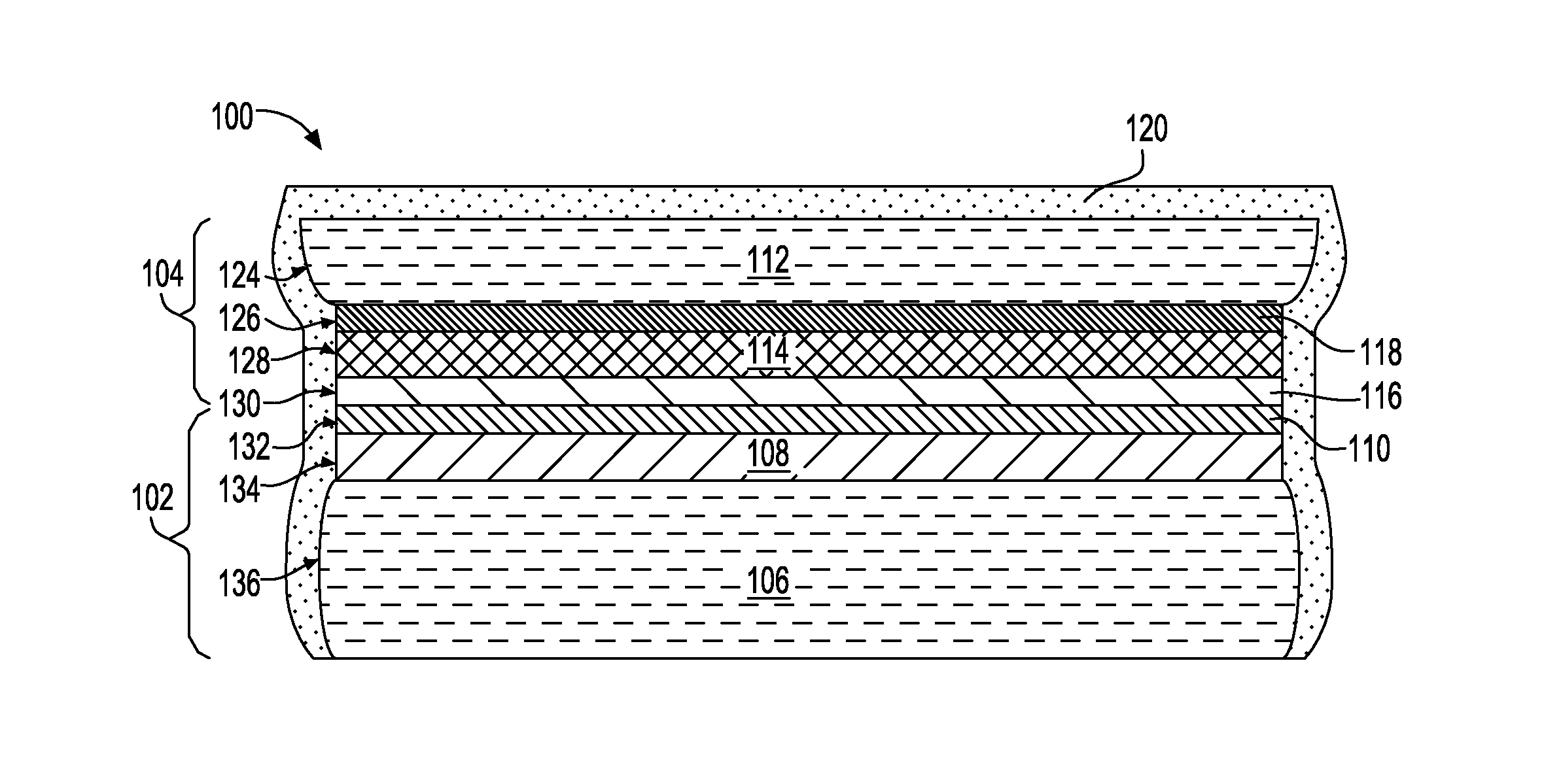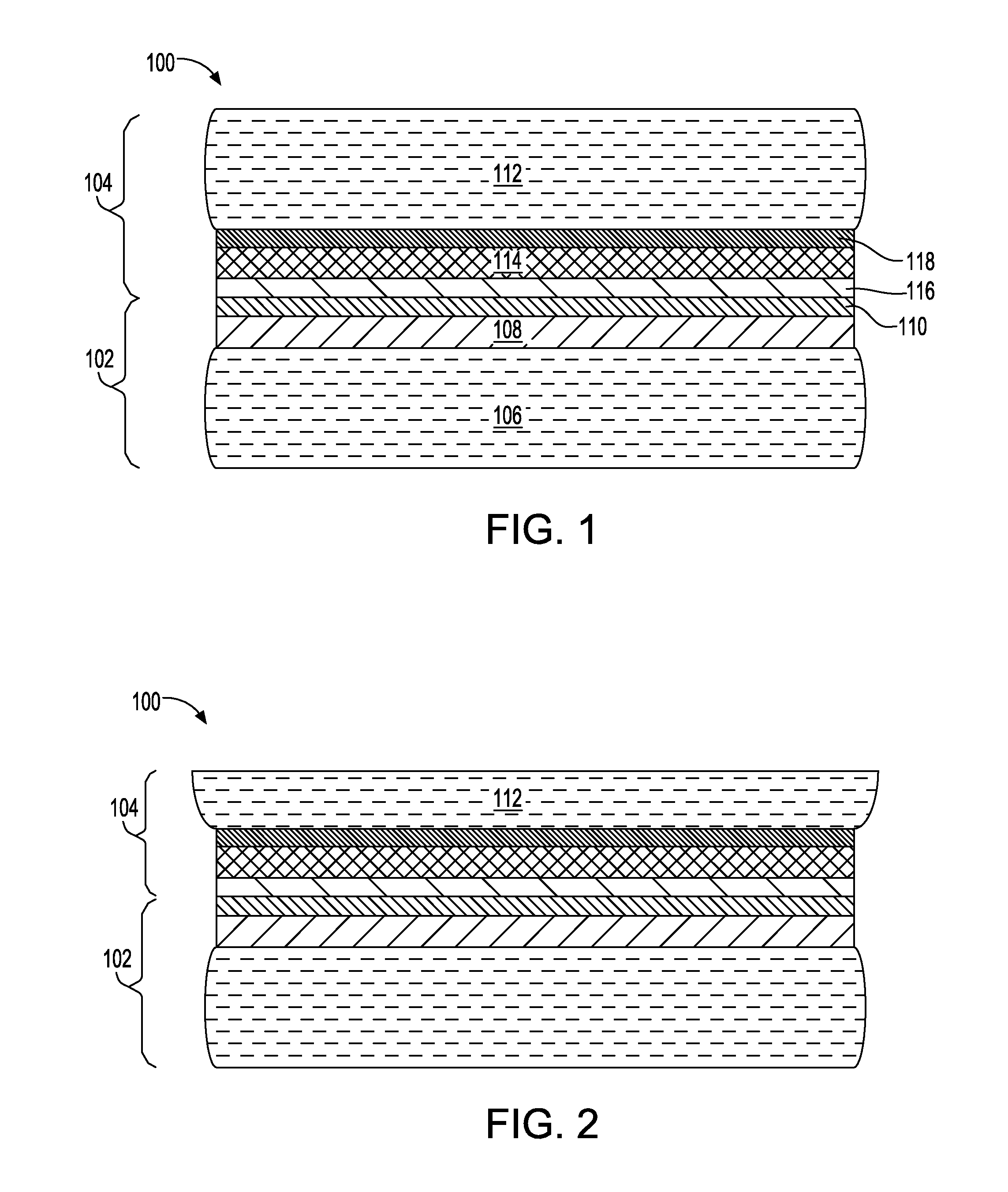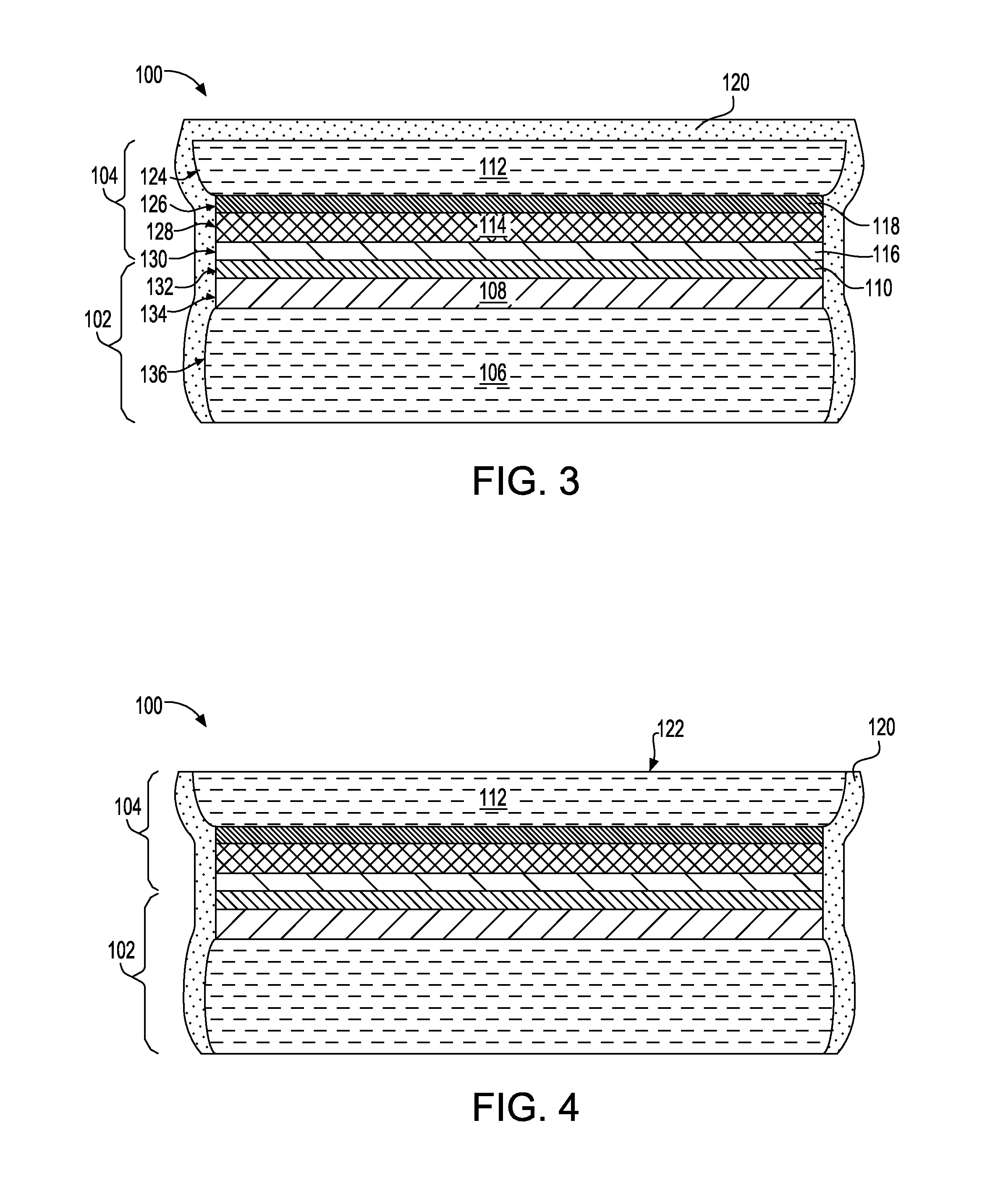Edge Protection of Bonded Wafers During Wafer Thinning
a technology of thinning process and edge protection, which is applied in the direction of semiconductor devices, semiconductor/solid-state device details, electrical apparatus, etc., can solve the problems of thinning process and thinning process, and can be very risky, and achieve the effect of preventing the thinning process from affecting the surface of the carrier wafer and the dielectric film
- Summary
- Abstract
- Description
- Claims
- Application Information
AI Technical Summary
Benefits of technology
Problems solved by technology
Method used
Image
Examples
Embodiment Construction
[0040]The present inventors propose to protect the edges of bonded semiconductor wafers during wafer thinning processing and subsequent processing operations until the time the semiconductor wafers are diced to form 3D semiconductor chips.
[0041]A first exemplary embodiment is illustrated in FIGS. 1 to 13.
[0042]Referring to the Figures in more detail, and particularly referring to FIG. 1, there are shown bonded semiconductor wafers 100 which may include a first semiconductor wafer 102 bonded to a second semiconductor wafer 104. The first semiconductor wafer 102 may also be referred to as a bottom wafer. First semiconductor wafer 102 includes a bulk silicon substrate 106, a device layer 108 and a bonding layer / interface 110. The device layer 108 may actually comprise several sublayers in which semiconductor devices and interconnect wiring may be formed.
[0043]Second semiconductor wafer 104 may also include a bulk silicon substrate 112, a device layer 114 and a bonding layer / interface 1...
PUM
 Login to View More
Login to View More Abstract
Description
Claims
Application Information
 Login to View More
Login to View More - R&D
- Intellectual Property
- Life Sciences
- Materials
- Tech Scout
- Unparalleled Data Quality
- Higher Quality Content
- 60% Fewer Hallucinations
Browse by: Latest US Patents, China's latest patents, Technical Efficacy Thesaurus, Application Domain, Technology Topic, Popular Technical Reports.
© 2025 PatSnap. All rights reserved.Legal|Privacy policy|Modern Slavery Act Transparency Statement|Sitemap|About US| Contact US: help@patsnap.com



